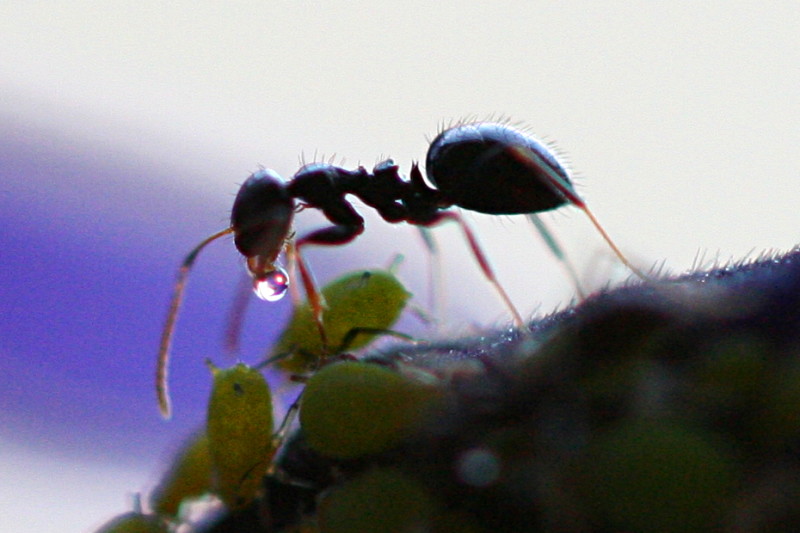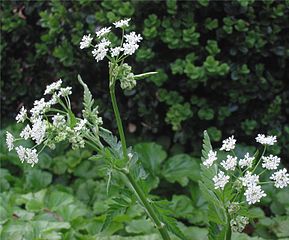
Insects, fungi, and the rest of a garden’s unwanted fauna and flora are capable of ruining whole months of carefully designed work. Gnawed leaves and fruits, shriveled stalks, ugly yellow and black spots where deep, lush, healthy green color should delight our eyes — all the above may well be prevented, simply by employing the means provided by nature itself.
Once your landscaping plans have come to realization and the basic structure of your garden is finally laid under your feet, then comes the time for the selection of the appropriate plants, the ones becoming your personal taste and fit for the local environmental conditions.
There are many factors that come into play when you get to that final decision about the plants that will embellish agreeable family or solitary hours in nature: appearance, blooming time, the plants’ needs in water and nutrients are the most basic of those. They are also the ones most extensively covered with tips and suggestions – a brief search on the ‘net will provide you with a number of quality resources. Nevertheless, when it comes to the sustainable health of your garden, it is important to also take into account the synergistic effect of co-cultivation.
The essence of this technique, which can be applied in a home garden or in a producing farm with the same success, is to use the beneficial action of wild and domesticated plants for the purpose of enhancing the soil, providing needed nutrients, and repelling pests and diseases. Just like men living in a community work together in their respective trades in order for the collective social body to function in a regular manner, plants also tend to benefit from each other’s particularities and strengths.
Plants are made to fight all by themselves the various diseases and harmful visitors that threaten their life and health. If this wasn’t the case, the natural world would have ceased to exist billions of years ago.
Herbs and Plants for Biological Pest Control
There are many flowers and herbs whose essential oils or root secretions are helpful to their neighbors, this is why pest control is so important. Here is a list of the most common among them, with brief information about which enemies of your garden they help eliminate in a natural manner:
Tansy (Tanacetum vulgare, or Cow bitter)
A herbaceous perennial, cultivated since ancient times for medicinal purposes. In the 16th century, it was considered as being “necessary for a garden” in Britain.
Tansy acts as a potent insect repellent, benefiting all garden and fruit-bearing plants. It drives away mites, ants, lice, greenflies, larvae, cabbage whites (pieris brassicae), apple cydia, potato beetles.

Cow Parsley (Anthriscus Sylvestris, or Queen Anne’s lace)
An herbaceous biennial, considered to be edible, although with a quite sharp taste. Be careful! It can be easily mistaken for several similar-looking poisonous plants, such as poison hemlock and fool’s parsley.
Cow parsley will drive snails away from your garden – so fast that you won’t believe it!
Caper Spurge (Euphorbia lathyris)
This is an erect (may grow up to four or five feet tall) biennial, and occasionally annual plant, which produces latex. Although toxic to the skin (may cause skin irritations), if planted in the perimeter of your garden, it will keep away mice.

Other plants that repel mice:
- Sunflower (Helianthus annuus)
- Dog’s tongue (Cynoglossum officinalis)
- Garlic* (Allium sativum)
* Other beneficial effects of garlic:
- Protects plants from fungi
- Enhances the plants’ aroma
- Enhances soil health
- Repels snails and mildew
Mugwort (Artemisia vulgaris, or Common wormwood)
A tall (up to six feet, rarely more) herbaceous perennial plant which is cultivated for both medicinal and culinary purposes. Also, there’s a number of Lepidoptera that feed on Artemisia, either exclusively or as part of their diet.
Mugwort is beneficial to all of your vegetables, as it repels cabbage white.

Pot Marigold (Calendula officinalis)
Pot marigold is among the easiest and versatile flowers to cultivate in a garden. It generally requires mild climates, where it grows as a perennial; in cold and hot climates it does not survive more than a year.
Planted in the perimeter of your garden or flower beds you need to protect, pot marigold repels roundworms (nematodes). It benefits all plants, especially tomatoes, potatoes, and rose bushes. It is also edible, most often used to add color to salads.
Mexican marigold (Tagetes erecta) can be used with the exact same properties.
Lavender (Lavandula angustifolia)
A strongly aromatic, evergreen shrub perfectly able to survive with very low water consumption and tolerant of low temperatures. It is used in perfumery, as a culinary herb, in massage therapy, and also as a prevention against clothing moths.
In the garden, where it is especially beneficial to trees and rose bushes, lavender repels greenflies and ants.
Stinging Nettle (Urtica dioica, Urtica urens)
After garlic, stinging nettle is the plant for a healthy and good-looking garden. It enhances the general health of plants while increasing production of crops, and it is very often used as liquid manure.
This is only a short selection among the numerous plants that act as biological pest control agents. The essential thing to retain is that a garden is no less than a mini-ecosystem with delicate balances to be observed during its life time. You, as masters of your private paradise, can follow nature’s infinite wisdom and relieve yourselves from many growing headaches — demonstrating, at the same time, your sensitivity and responsibility towards our much-afflicted environment.

